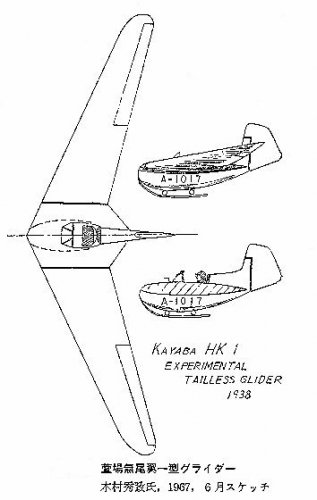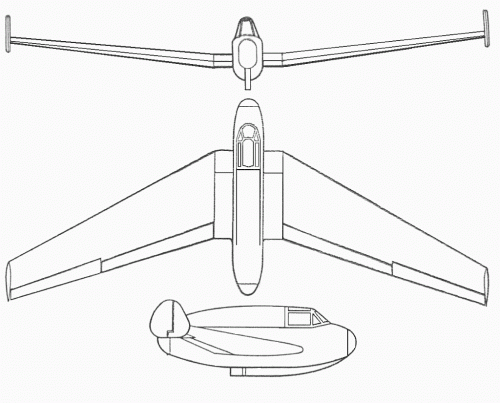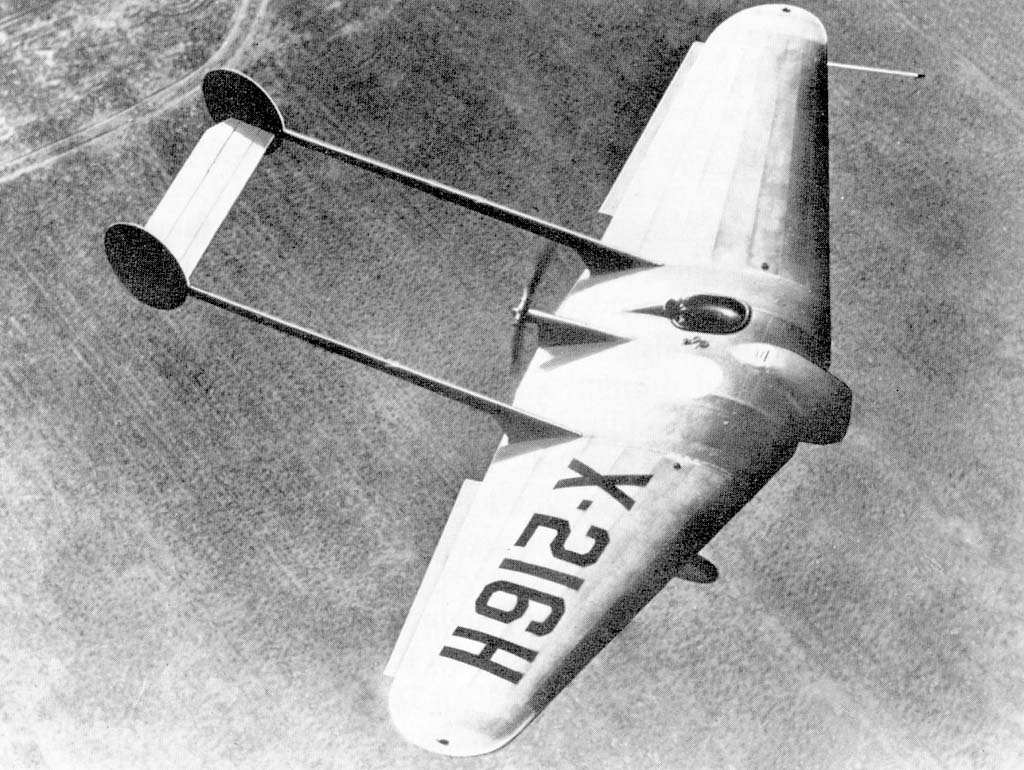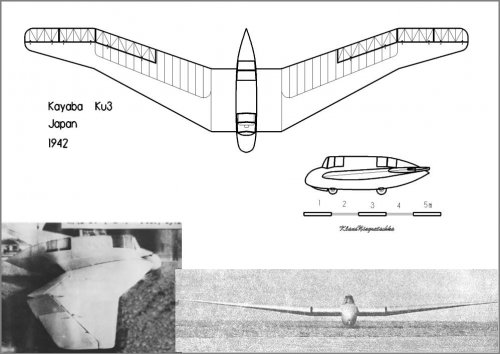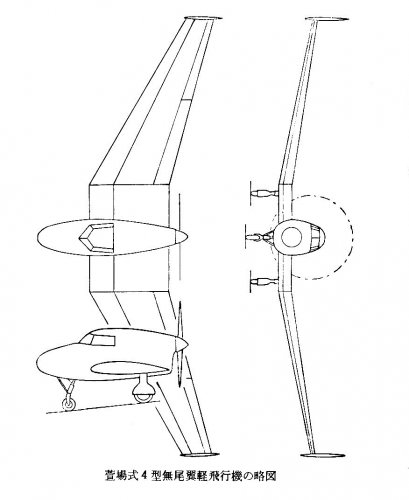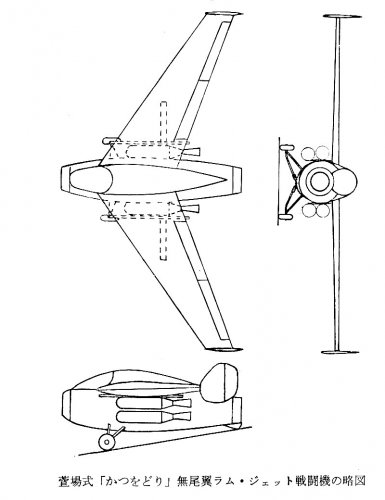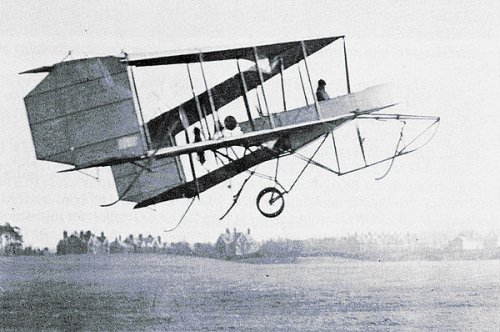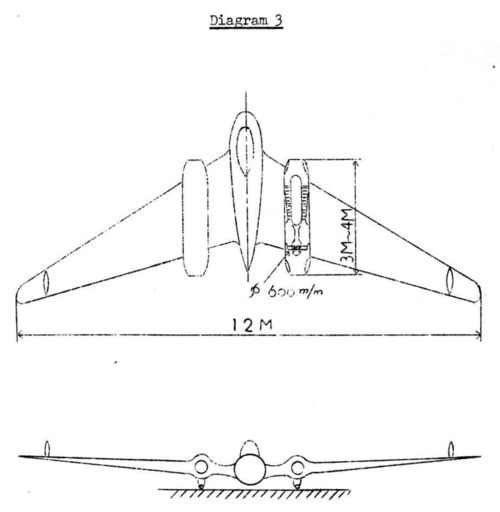- Joined
- 8 March 2009
- Messages
- 939
- Reaction score
- 924
Sounds pretty notional but maybe something more has survived?
"Captured documents indicate that, as far back as 1941, the Japanese were considering jet-propulsion as a means of powered flight, and that by early 1942 they had developed the theory of a turbo-jet power unit, had the basic design of such a unit already completed and had evolved the design of an aircraft— of the flying-wing type - powered by two turbo-jet units"
"In the fields of turbo-jet propulsion research, a captured document reports on the results of experiments during the period April 41 - March 42 as carried out at the Naval Air Technical Depot, presumably at Yokosuka. That document, stated to be the sixth report on the subject, includes & theoretical treatment of pressure and temperature distribution in & turbo-jet unit together with an analysis of the thermodynamics of such a unit. The report concludes with a schematic diagram of a turbo-jet unit, together with a tailless aircraft powered by two such units."
From German Technical Aid to Japan Military Intelligence Service
"Captured documents indicate that, as far back as 1941, the Japanese were considering jet-propulsion as a means of powered flight, and that by early 1942 they had developed the theory of a turbo-jet power unit, had the basic design of such a unit already completed and had evolved the design of an aircraft— of the flying-wing type - powered by two turbo-jet units"
"In the fields of turbo-jet propulsion research, a captured document reports on the results of experiments during the period April 41 - March 42 as carried out at the Naval Air Technical Depot, presumably at Yokosuka. That document, stated to be the sixth report on the subject, includes & theoretical treatment of pressure and temperature distribution in & turbo-jet unit together with an analysis of the thermodynamics of such a unit. The report concludes with a schematic diagram of a turbo-jet unit, together with a tailless aircraft powered by two such units."
From German Technical Aid to Japan Military Intelligence Service

